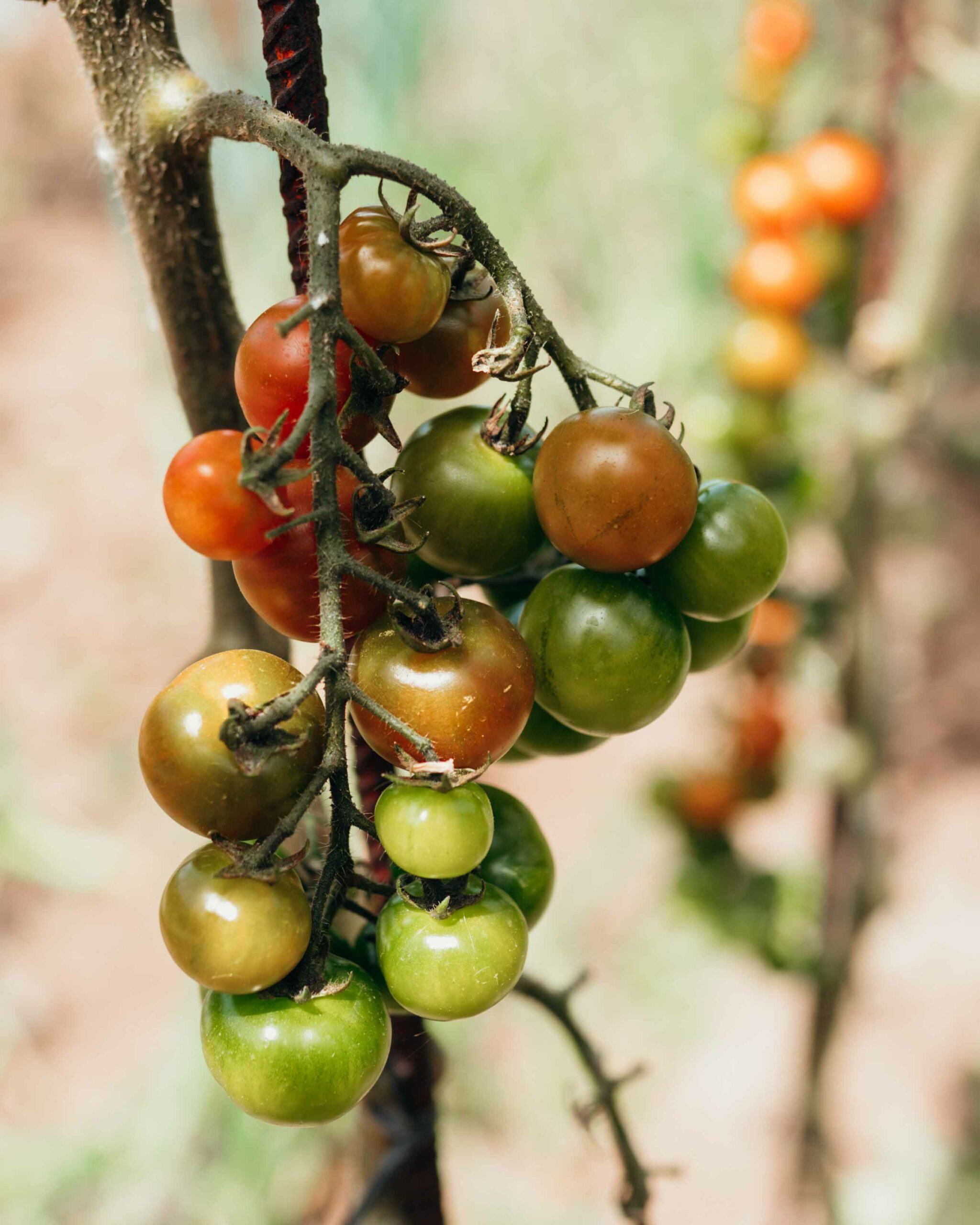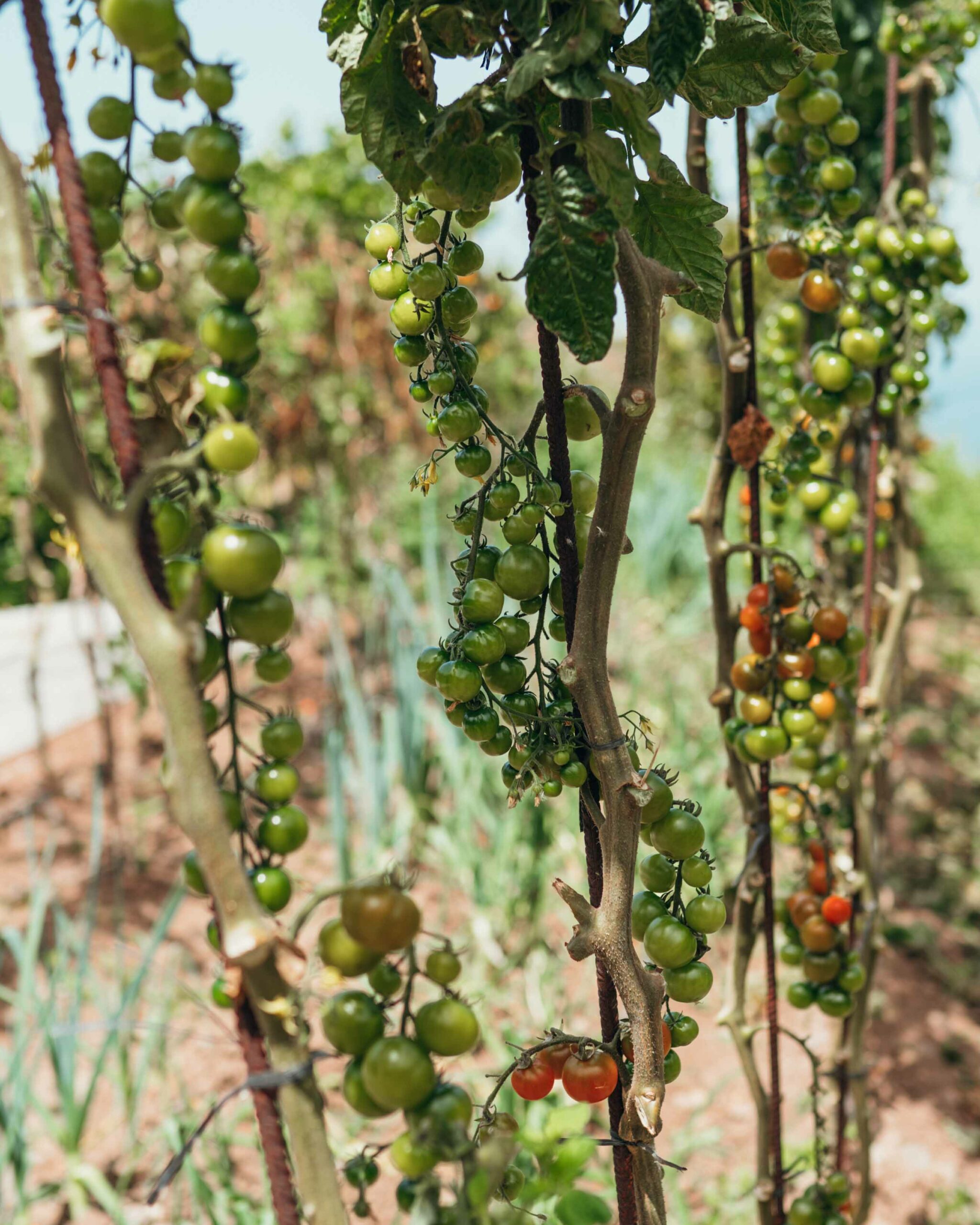Solanum lycopersicum
Tomate
Englische Bezeichnung: Tomato
Spanische Bezeichnung: Tomate
Familie
Nachtschattengewächse (Solanaceae)
Verwendbare Teile
Frucht
Hauptbestandteile
-
Mineralstoffe: Kalium
-
Vitamine: Vitamin C, E, K, Beta-Carotin (Provitamin A), Folsäure
-
Sekündäre Pflanzenstoffe: Carotinoide (Lycopin), Flavonoide, Polyphenole
Sorten auf der Finca:
-
Cherry Tomate
-
Salat Tomate
-
Soßen Tomate
-
Fleisch Tomate
Ernte-Hinweise:
So erkennt man die Erntereife: rote Tomaten sind vollständig durchgefärbt, ganz ohne grüne Stellen. Gelbe, grüne, orange oder dunkle Früchte geben auf Druck ein wenig nach. Die Sollbruchstelle am Fruchtstiel knickt ohne übermäßige Krafteinwirkung.
Verwendung:
Kochen, Braten, Backen , Rohkost
-
z.B.: als Rohkost-Snack, Gemüsebeilage, in Suppen, Eintöpfen, Aufläufen, Gemüsepfannen, Pasta-Soßen,…
Zu verdanken haben wir den Anbau in unseren Breitengraden den Eroberern, die die Tomate mit der Kartoffel aus Südamerika nach Europa gebracht haben.
Family
Nightshade family (Solanaceae)
Parts Used:
Fruit
Key Constituents:
-
Minerals: potassium
-
Vitamins: Vitamins C, E, K, beta-carotene (provitamin A), folic acid
-
Secundary plant substances: carotenoids (lycopene), flavonoids, polyphenols
Harvesting Guidelines:
Perfect harvest timing: red tomatoes are completely colored through, completely without green spots. Yellow, green, orange or dark fruits give a little under pressure. The predetermined breaking point on the fruit stem bends without excessive force.
Use:
Raw, cooking, frying, baking
-
e.g.: as a raw snack, vegetable garnish, in soups, stews, casseroles, vegetable pans, pasta sauces,…
We owe the cultivation in our areas to the conquerors who brought the tomato with the potato from South America to Europe.
Familia
Solanaceae
Partes aprovechables:
frutas
Principales Constituyentes:
-
Minerales: potasio
-
Vitaminas: Vitamina C, E, K, betacaroteno (provitamina A), ácido fólico
-
Sustancias vegetales secundarias: Carotenoides (licopeno), flavonoides, polifenoles
Indicaciones de Cosecha:
Así es como puede determinar cuándo están listos para ser cosechados: los tomates rojos están completamente coloreados, sin ninguna mancha verde. Los frutos amarillos, verdes, anaranjados u oscuros ceden un poco al presionarlos.
Uso:
cruda, Cocinar, asar, hornear
-
por ejemplo: ejemplo: como Snack de verduras crudas, guarnición de verduras, en sopas, guisos, cazuelas de verduras, salsas de pasta,.
Debemos el cultivo en nuestras latitudes a los conquistadores que trajeron el tomate con la patata desde Sudamérica a Europa.








































